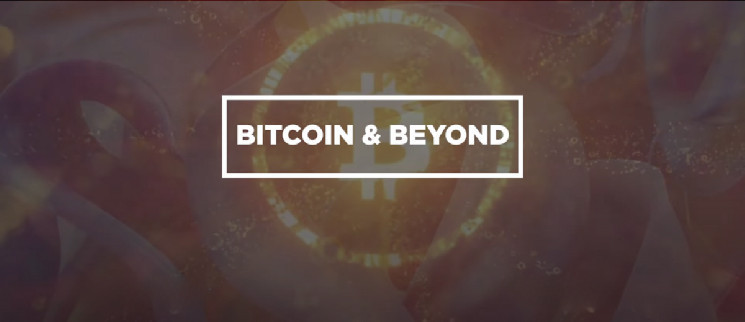Bitcoin & Beyond is an educational series by the team at The Rollup focused on a new and emerging class of builders in the Bitcoin ecosystem. Through spaces, panels, and interactive presentations, the objective is to provide deep technical insights into innovative scaling projects.
In an interview with Chase from Molecule, we dive into the growing appetite for next-generation virtual machines (VMs) aimed at enhancing Bitcoin's programmability and scalability. Molecule is one company at the forefront of this experiment. Their attempt to implement Solana’s Virtual Machine (SVM) with Bitcoin is a strong signal that builders are also considering alternatives to the popular Ethereum Virtual Machine (EVM).
High-Performance VMs for Bitcoin
Chase emphasized that Molecule’s goal is to leverage the most performant execution environment to benefit Bitcoin users. He believes the Solana Virtual Machine (SVM) offers unparalleled throughput and cost efficiency. “SVM provides the highest throughput with a super battle-tested execution environment,” Chase noted, highlighting the VM's ability to achieve 1000 transactions per second at a fraction of a penny per transaction.
The SVM's architecture, designed for parallel transaction processing, significantly enhances scalability and efficiency. At a very basic level, it enables the concurrent execution of multiple smart contracts, setting SVM apart from other VMs that rely on sequential processing models, like the EVM. This results in higher throughput and lower latency, crucial for applications requiring high performance and minimal transaction costs
A Thriving Developer Ecosystem
A key reason for Molecule's decision to adopt the Solana Virtual Machine (SVM) lies in its thriving developer ecosystem and the wide adoption of Rust as a programming language. Solana boasts over 3,300 active developers as of late 2023, according to Electric Capital. This robust community is supported by extensive tooling and educational resources which have significantly improved developer retention.
Chase also brought up Rust, Solana’s development language, as playing a crucial role in the SVM’s success. With over 3 million Rust developers globally, the transition to using SVM is seamless for many, given their familiarity with the language. This extensive developer base and the language's strong integration within Web3 ecosystems ensure that SVM is not only technically superior but also advantageous for broader adoption and innovation.
By focusing on a VM that aligns well with developer preferences and offers a robust, scalable environment, Molecule ensures they are building on a foundation that encourages rapid development and deployment of new applications on Bitcoin.
Monolithic vs. Modular Vision
Another emphasis was on the inherent limitations of Bitcoin’s Layer 1, which necessitate a modular approach to enhance programmability and scalability. Traditional monolithic blockchains integrate all core functions—execution, data availability, consensus, and settlement—into a single layer. While this design enhances security and decentralization, it also creates significant bottlenecks that limit transaction throughput and flexibility. Bitcoin’s Layer 1 can process only a limited number of transactions per second, restricting its ability to support complex smart contracts and higher transaction volumes
To address these constraints, Molecule adopts a modular approach, decoupling these functions into distinct layers. This architecture allows for the specialization and optimization of each layer, significantly improving scalability and efficiency. By leveraging modular stacks, Molecule aims to integrate Solana’s execution layer (SVM) with ZK (zero-knowledge) verification for transactions on Bitcoin.
Molecule’s innovative SVM rollup stack focuses on enabling ZK verification of transactions through a ZKVM (Zero-Knowledge Virtual Machine) and posting ZK snarks (Succinct Non-Interactive Arguments of Knowledge) to Bitcoin using a challenge-reward mechanism. This method ensures secure and efficient transaction finalization on Bitcoin.
Molecule is considering different options for this challenge mechanism, potentially using BitVM or a variant based on a future OP_CAT soft fork. BitVM utilizes a challenge-prover system where any verifier can contest transactions during a predefined challenge period, ensuring the integrity and accuracy of asset transfers. Chase explained, "you can verify any asset transfers from molecule back to Bitcoin. There's a challenge period where you can, any verifier can come in and say that, hey, there's some issues, then they can go through this challenge mechanism." This approach blends off-chain computation with on-chain verification, providing a robust and cost-effective solution for maintaining transaction finality and security.
A new Bitcoin L2 narrative
When asked about the Bitcoin community’s stance on Layer 2 (L2) solutions, Chase observed a notable shift in attitude towards embracing programmability. Traditionally, many Bitcoin purists have been wary of L2 solutions, fearing they might compromise the network's security and decentralization. However, recent advancements and the increasing demand for more scalable applications have started to change this perspective.
"I think the Bitcoin community definitely demands programmability for Bitcoin. SVM is the best solution to that in terms of throughput and cost," Chase stated, underscoring the community's evolving openness to L2 innovations.
Molecule’s innovative approach and commitment to integrating high-performance virtual machines (VMs) with Bitcoin mark a transformative step towards enhancing Bitcoin’s utility and scalability.
This is a guest post by The Rollup. Opinions expressed are entirely their own and do not necessarily reflect those of BTC Inc or Bitcoin Magazine.
 bitcoinmagazine.com
bitcoinmagazine.com
